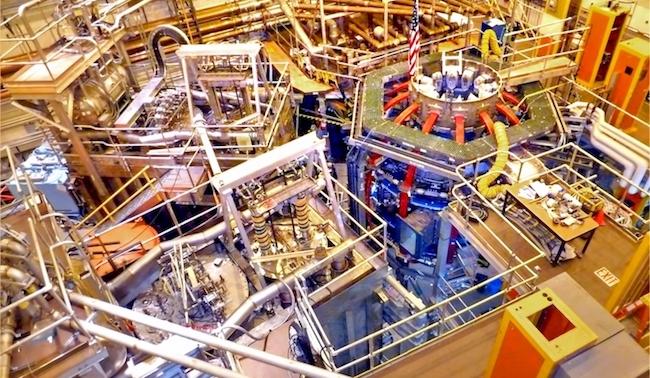Analysis by Rick Wayman*

WASHINGTON, D.C: (IDN) – On May 23, the U.S. Department of Energy (DOE) issued a press release celebrating President Trump’s proposed 2018 budget. DOE specifically lauded the proposed “$10.2 billion for Weapons Activities to maintain and enhance the safety, security, and effectiveness of our nuclear weapons enterprise.”
Less than 24 hours earlier, Ambassador Elayne Whyte of Costa Rica released a draft of a treaty banning nuclear weapons. Ambassador Whyte is President of the United Nations Conference to negotiate a legally binding instrument to prohibit nuclear weapons, leading towards their total elimination. Over 130 nations have participated in the ban treaty negotiations thus far. A final treaty text is expected by early July. [P 05] ARABIC | GERMAN | ITALIAN | JAPANESE TEXT VERSON PDF | SPANISH
The draft treaty would prohibit state parties from – among other things – developing, producing, manufacturing, possessing or stockpiling nuclear weapons. The United States has aggressively boycotted the treaty negotiations, and has actively sought to undermine the good faith efforts of the majority of the world’s nations to prohibit these indiscriminate and catastrophically destructive weapons.
No one is surprised at President Trump’s proposed funding for nuclear weapons activities; in fact, it is largely a continuation of the U.S. nuclear “modernization” program that began under President Obama. What is alarming, however, is the tacit admission by the Department of Energy that it is not simply maintaining current U.S. nuclear warheads until such time as they are eliminated. Rather, it is enhancing the “effectiveness” of nuclear weapons by incorporating new military capabilities into new weapons expected to be active through the final decades of the 21st century.
The draft ban treaty makes clear “that the catastrophic consequences of nuclear weapons transcend national borders, pose grave implications for human survival, the environment, socioeconomic development, the global economy, food security and for the health of future generations.”
Whether or not the United States plans to join the majority of the world’s nations in a treaty banning nuclear weapons, its policies and programs must reflect the indisputable evidence of the catastrophic consequences of nuclear weapons use. There is simply no excuse for investing in new nuclear weapons instead of an all-out diplomatic push for true security in a world without nuclear weapons.
A Good Faith Obligation
Article VI of the Treaty on the Nonproliferation of Nuclear Weapons (NPT) obligates all parties to negotiate in good faith for an end to the nuclear arms race at an early date. That treaty entered into force over 47 years ago.
The draft ban treaty repeats the unanimous 1996 declaration of the International Court of Justice (ICJ), which said, “There exists an obligation to pursue in good faith and bring to a conclusion negotiations leading to nuclear disarmament in all its aspects under strict and effective international control.”
Judge Christopher Weeramantry was Vice President of the ICJ when it issued its 1996 Advisory Opinion. In a paper that he wrote for the Nuclear Age Peace Foundation in 2013, he examined in detail the concept of good faith in the context of nuclear disarmament.
He wrote, “There is no half-way house in the duty of compliance with good faith in international law.” He continued, “Disrespect for and breach of good faith grows exponentially if, far from even partial compliance, there is total non-compliance with the obligations it imposes.”
The U.S. and numerous other nuclear-armed countries argue that they are in compliance with their obligations because the total number of nuclear weapons in their arsenals has decreased. Quantitative reductions are important, and the progress on this front has been significant over the past couple of decades. However, a nuclear arms race need not simply be quantitative. Rather, what we see now among many of the nuclear-armed nations is a qualitative nuclear arms race, with enhancements of weapons’ “effectiveness” being a key component.
This qualitative nuclear arms race is a blatant breach of the good faith obligation and, according to Judge Weeramantry’s interpretation, likely even constitutes bad faith.
A Ban Is Coming
Regardless of how much money the United States and other nuclear-armed nations commit to their nuclear arsenals, the vast majority of the world’s nations plan to conclude a treaty banning nuclear weapons in July.
Even though such a treaty will not immediately halt nuclear weapons development or diminish the threat that current nuclear weapon arsenals pose to all humanity, it is an important step in the right direction.
The NPT and customary international law require all nations – not just those that possess nuclear weapons – to negotiate for nuclear disarmament. The ban treaty is the first of many steps needed to fulfill this obligation, and will lay a solid foundation for future multilateral action.
Non-nuclear-armed countries must continue to enhance the effectiveness of their diplomatic arsenals to ensure the successful entry into force of a ban treaty and subsequent measures to finally achieve a world free of nuclear weapons.
Author’s note: Generally speaking, the U.S. Department of Energy is in charge of the design, production and maintenance of nuclear warheads and bombs, while the Department of Defense deals with the delivery systems (ICBMs, submarines, and bomber aircraft) and deployment in additional multi-billion dollar budget lines not addressed in this article. For more information on the Department of Energy’s nuclear “modernization” plans, see the Alliance for Nuclear Accountability’s new report “Accountability Audit.”
*Rick Wayman is Director of Programs & Operations at the Nuclear Age Peace Foundation. He also serves on the Board of Directors of the Alliance for Nuclear Accountability and is Co-Chair of the “Amplify: Generation of Change” network for nuclear abolition. [IDN-InDepthNews – 24 May 2017]
Read also: Trump 2018 Budget Proposes Hike in Arms Spending
Photo: A step closer to fusion energy. Credit: DOE
IDN is flagship agency of the International Press Syndicate.
facebook.com/IDN.GoingDeeper – twitter.com/InDepthNews






